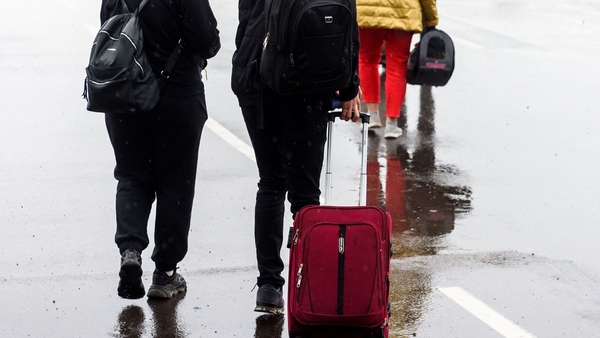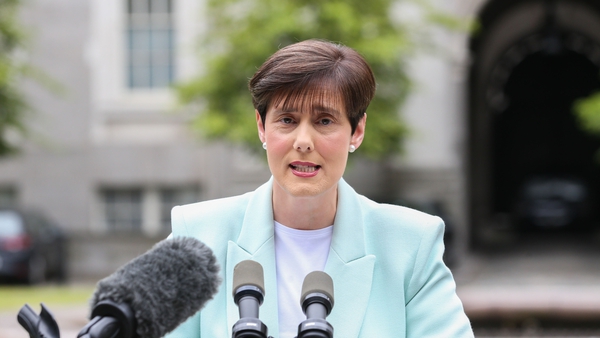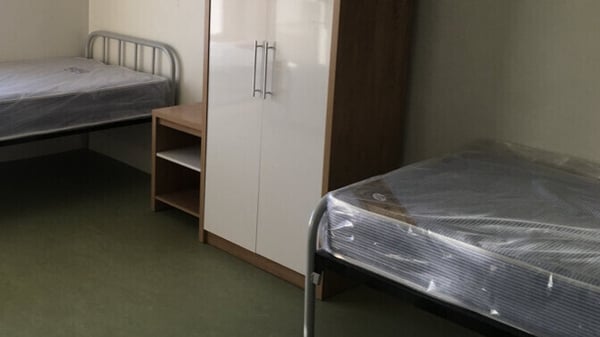Increasing female labour force participation and spending more on benefits targeting children would decrease poverty, according to a study by the ESRI.
The research shows that between 2004-2019, lone parents and their children and working-age adults with disabilities and their children, experienced the highest rates of at risk-of-poverty deprivation and consistent poverty.
The study, commissioned by the Department of Social Protection found that these groups also had the highest degree of overlap between income poverty and deprivation.
The ESRI used data from the Irish Survey on Income and Living Conditions for 2019 which is conducted annually by the Central Statistics Office.
It also used data from ESRI's SWITCH model (Simulating Welfare Income Tax Childcare and Health) to simulate the effects.
In 2019, 57% of lone parents that were income poor were also deprived.
That figure was 49% for those living in households of working-age adults with disabilities.
Together, these two groups accounted for just over half of those in consistent poverty in 2019, when the rate was 5.5%.
The 'at risk of poverty' rate measures whether an individual lives in a household with less than 60% of median income.
The ESRI has estimated an overall at risk poverty rate of 14% for 2022 but says that by increasing female labour force participation and hours worked to match those of men, this could be reduced to 11.1%.
The study also showed that if the head of all jobless households took up a job, this would substantially contribute to reducing at risk poverty rates by three percentage points for children and by two percentage points for the whole population.
We need your consent to load this rte-player contentWe use rte-player to manage extra content that can set cookies on your device and collect data about your activity. Please review their details and accept them to load the content.Manage Preferences
The research estimated that increasing labour market participation of women could decrease the at risk poverty rate by 2.9 percentage points while activating jobless households could decrease the at risk poverty rate by 2.1 percentage points.
It found that a mix of policy measures, including activation and social welfare, would likely be needed to reach the consistent poverty target rate of 2% by 2025.
Bertrand Maître who is one of the report authors said a combination of measures targeting both employment and social transfers is likely to be the most effective way to address poverty reduction targets.
"This could involve increased spending on benefits targeted at vulnerable groups and tackling barriers to work such as childcare costs," he said.
Minister of State with responsibility for Social Inclusion in the Department of Social Protection Joe O'Brien, who commissioned the research, noted that the Government was committed to reducing consistent poverty to 2% or lower by 2025, as set out in the Roadmap for Social Inclusion 2020 - 2025.
He said the report was "an important contribution to inform policymaking in this area as it examines which means are most effective in reducing poverty."
Speaking on RTÉ's Morning Ireland, co-author of the report Dr Karina Doorley said: "The main take away is that there is no one best option for reducing poverty, and it's likely that a mix of options will be required.
She added: "So many families who are in consistent poverty are those with children, so very sadly children are more likely to be in poverty than adults.
"So increasing female labour force participation could reduce the consistent poverty rate so it could move, we estimate, 75,000 people out of consistent poverty. And this effect is quite large because mothers have an employment rate of less than 70% compared to more than 85% for fathers".
Ireland was an outlier during the pandemic in comparison to other countries in how it affected the number of women in the workforce.
Dr Doorley said this is because women in Ireland are employed more in areas that were deemed essential during lockdowns and so they did not lose their jobs as a result.
She also said that it is very unlikely that reaching the target of 2% poverty rate will be achieved without policy interventions in terms of increasing employment, but also through the social welfare system.
If an extra €1bn a year was spent on social welfare especially if it was targeted towards households with children consistent poverty could be reduced by a further one percentage point, resulting in around 50,000 people being taken out of consistent poverty, Dr Doorley said.
That is equivalent to a month of spending on the Pandemic Unemployment Payment at the height of the pandemic, she said.






